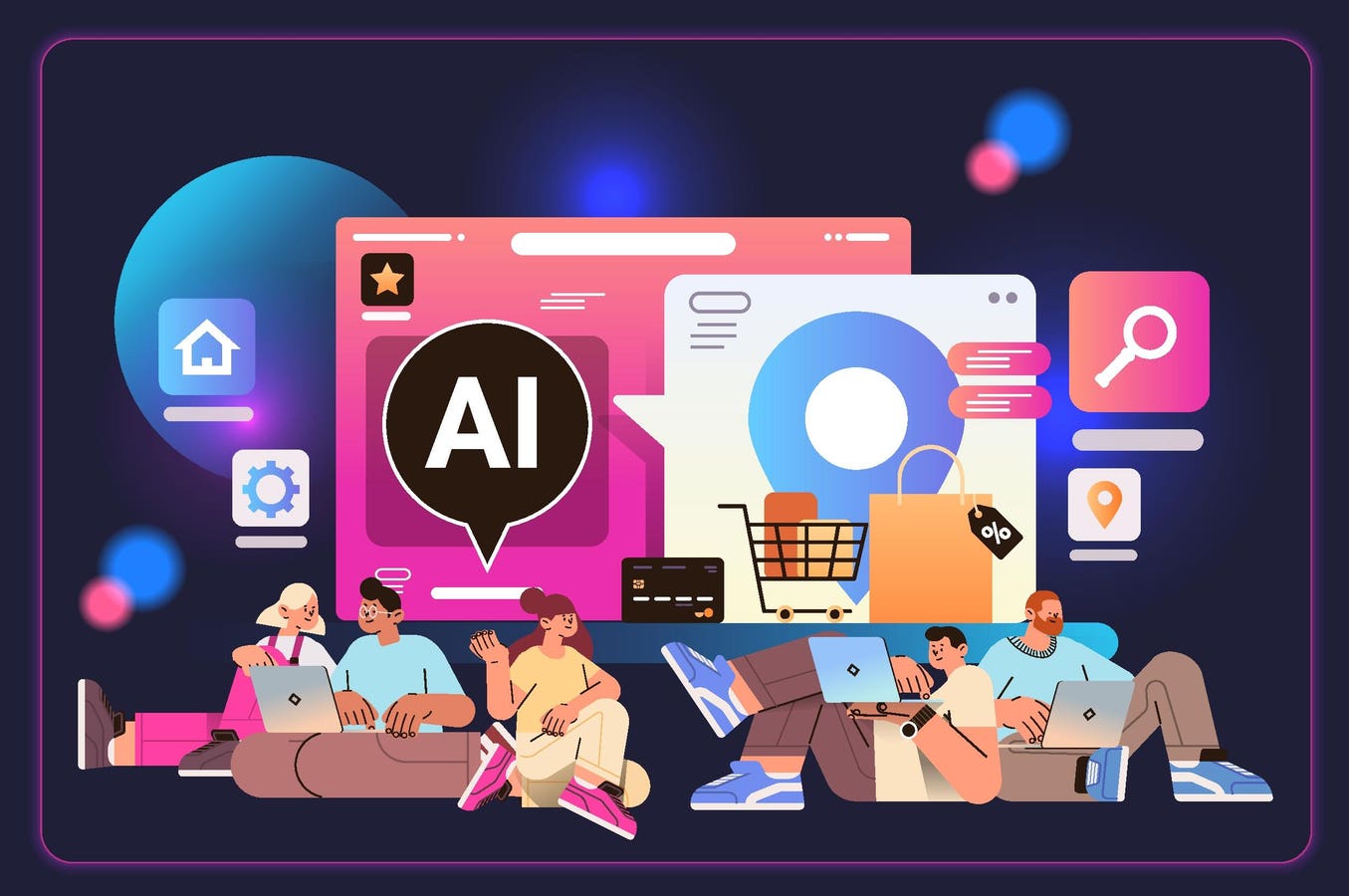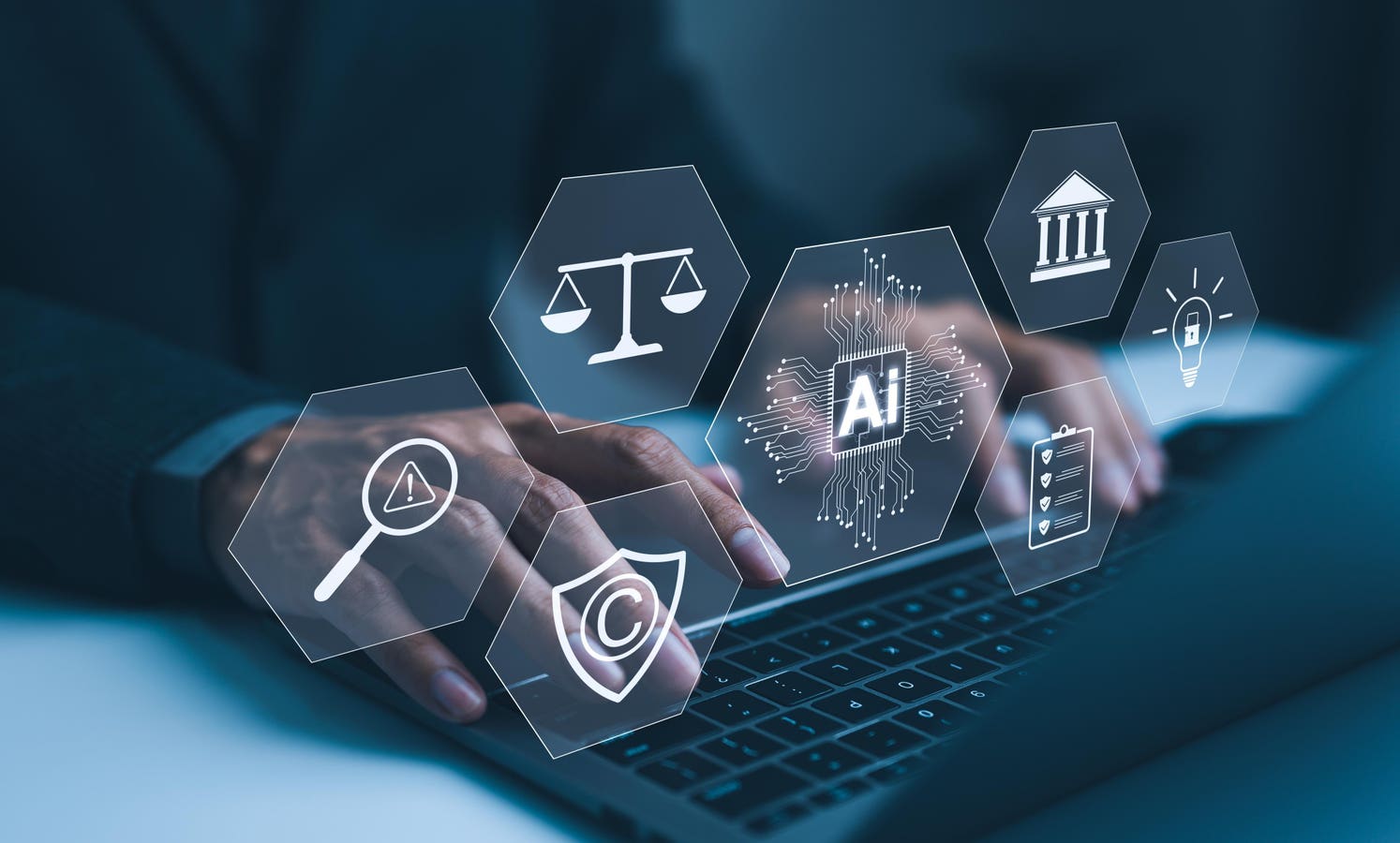Innovation and Technology
Wellness and Burnout Prevention

The modern workplace is undergoing a significant transformation, with the rapid growth of remote work, flexible schedules, and endless digital connectivity. While these changes bring numerous benefits, they also pose unique challenges for employees, managers, and organizations. Burnout, a state of emotional, mental, and physical exhaustion, is on the rise, threatening the well-being and productivity of many individuals. In this article, we’ll explore the importance of wellness and burnout prevention in the future of work, highlighting innovative strategies to promote a healthier, happier, and more resilient workforce.
The Rise of Burnout
Burnout is a pervasive problem, affecting millions of people worldwide. According to the World Health Organization (WHO), burnout is a syndrome characterized by three dimensions: feelings of emotional exhaustion, cynicism, and reduced performance. The consequences of burnout can be severe, leading to decreased job satisfaction, absenteeism, turnover, and even chronic illnesses. In the digital age, the risk of burnout is exacerbated by the blurring of boundaries between work and personal life, the constant pressure to be available 24/7, and the lack of clear boundaries and work-life balance.
Wellness and Burnout Prevention
Wellness and burnout prevention are closely intertwined. A well-designed wellness program can help employees develop resilience, improve their mental and physical health, and enhance their job performance. Conversely, burnout can have devastating effects on an organization’s overall well-being and productivity. To mitigate this risk, employers must prioritize employee wellness and burnout prevention by:
1. Fostering a Positive Work Culture
A positive work culture is essential for employee well-being and job satisfaction. This can be achieved by:
- Encouraging open communication and feedback
- Recognizing and rewarding employees’ efforts and achievements
- Fostering a sense of community and social connection
- Promoting work-life balance and flexibility
- Providing opportunities for growth and development
2. Improving Job Demands and Resources
A well-designed job can help prevent burnout by:
- Providing clear goals and expectations
- Offering adequate training and support
- Ensuring a manageable workload and realistic deadlines
- Encouraging autonomy and decision-making
- Fostering a sense of purpose and meaning
3. Enhancing Employee Well-being
Employee well-being is critical for overall health and job performance. To promote well-being, employers can:
- Offer employee assistance programs (EAPs) for mental health and wellness
- Provide on-site fitness and wellness facilities
- Encourage healthy habits and lifestyle choices
- Offer flexible work arrangements and telecommuting options
- Recognize and reward employees’ achievements and milestones
Innovative Strategies for Burnout Prevention
In addition to the above strategies, organizations can leverage innovative solutions to prevent burnout and promote employee well-being. Some examples include:
1. Virtual Reality Meditation and Mindfulness
Virtual reality (VR) and mindfulness apps can help employees relax, reduce stress, and improve their mental well-being.
2. AI-powered Employee Assistance Programs
Artificial intelligence (AI) can help EAPs provide more personalized support and resources to employees, reducing wait times and increasing accessibility.
3. Wellness Challenges and Gamification
Wellness challenges and gamification can encourage employees to engage in healthy habits, compete with colleagues, and build a sense of community.
Conclusion
In conclusion, the future of work requires a proactive approach to wellness and burnout prevention. By fostering a positive work culture, improving job demands and resources, and enhancing employee well-being, organizations can promote a healthier, happier, and more resilient workforce. Innovative strategies like VR meditation, AI-powered EAPs, and wellness challenges can further support employee well-being. As we move forward, it’s crucial to prioritize employee wellness and burnout prevention, recognizing that a healthy workforce is a productive, happy, and successful one.
FAQs
Q: What are some common signs of burnout?
A: Common signs of burnout include chronic fatigue, decreased motivation, increased cynicism, and reduced performance.
Q: How can I prevent burnout?
A: Preventing burnout requires prioritizing self-care, setting realistic goals, and seeking support from colleagues, managers, and EAPs.
Q: What are some effective strategies for managing stress?
A: Effective stress management strategies include exercise, meditation, and mindfulness, as well as seeking social support and taking regular breaks.
Q: Can technology help prevent burnout?
A: Yes, technology can play a crucial role in preventing burnout by providing remote work options, AI-powered EAPs, and virtual reality meditation tools.
Q: Why is employee well-being important?
A: Employee well-being is crucial for overall health, job performance, and organizational success. It can also lead to increased job satisfaction, loyalty, and retention.
Innovation and Technology
Walmart Unveils ‘Sparky’ AI Initiative

Introduction to Agentic AI in Retail
Walmart last week unveiled Sparky, a generative AI-powered shopping assistant embedded into the Walmart app. The new AI assistant, Sparky, isn’t just another chatbot bolted onto an app. It’s part of a much bigger plan to use autonomous agents to transform how people shop.
The Move Towards Automation
Beneath the surface lies something bigger: a move toward automation that could change not only the way we buy things, but also the structure of retail work itself. Increasingly intelligent apps like Sparky might become the standard way customers interact with Walmart. Then again, it might frustrate, confuse or quietly fade away.
From Shopping Assistant to Agent
Sparky can now summarize reviews, compare products, suggest items for occasions such as beach trips or birthdays and answer real-world questions such as what sports teams are playing. In the coming months, additional features will include reordering and scheduling services, visual understanding that can take image and video inputs and personalized “how-to” guides that link products with tasks such as fixing a faucet or preparing a meal.
The Capabilities of Sparky
Sparky isn’t designed to just answer product questions. It can act. If you’re planning a cookout, Sparky won’t just list grill options. It’ll check the weather, suggest menus and help schedule delivery. If you’re reordering household supplies, it remembers preferences, checks stock and confirms shipping options. The idea is to reduce friction and turn shopping from a search problem into a service experience.
What Walmart’s Data Shows About Changing Customer Preferences
Consumers may be more ready for the shift to agentic and generative AI-powered shopping than anyone expected, according to Walmart’s own research. In the company’s latest “Retail Rewired 2025” report, 27% of consumers said they now trust AI for shopping advice, more than the number who trust social media influencers (24%). That marks a clear break from traditional retail playbooks. Influence is shifting from people to systems.
The Adoption of AI in Retail
A core reason for the adoption of AI is that speed dominates. A majority (69%) of customers say quick solutions are the top reason they’d use AI in retail. AI’s rapid emergence at the core of e-commerce transactions from LLM chats to embedded applications is clear. Some of Walmart’s internal research results are genuinely surprising. Nearly half of shoppers (47%) would let AI reorder household staples, but just 8% would trust an AI to do their full shopping without oversight. And 46% say they’re unlikely to ever fully hand over control. Likewise, data transparency matters. Over a quarter of shoppers want full control over how their data is used.
Why Now? Retail is Making a Leap
Competitors like Amazon, IKEA and Lowe’s are also racing to launch AI assistants. But Walmart is going further. It’s building a full agent framework, not just customer-facing bots. Sparky’s promise goes beyond convenience. Where recommendation engines once matched products to past clicks, Sparky looks to understand intent in context. If you say, “I need help packing for a ski trip,” Sparky should infer altitude, weather, travel dates, previous purchases and even airline baggage limits to propose a bundle, jacket, gloves, boots and all.
The Future of Agentic AI in Retail
This leap requires multimodal AI capabilities including text, image, audio and video understanding. Imagine snapping a photo of a broken cabinet hinge and getting the right part, DIY video and same-day delivery. That’s the Sparky roadmap. Walmart is also developing its own AI models, rather than relying solely on third-party APIs like OpenAI or Google Gemini. According to CTO Hari Vasudev, internal models ensure accuracy, alignment with retail-specific data and stricter control over hallucination risks.
Why Agentic AI Could Become the New Retail OS
The retail industry is saturated with automation at the warehouse and logistics layer, but AI agents at the consumer-facing layer are still new territory. Sparky might be the first mainstream proof of concept. But the real story is the architecture: a system of purpose-built, task-specific agents that talk to each other across user journeys, all tuned for high-volume retail complexity. That’s a blueprint other enterprises will want to study, and possibly copy.
Challenges and Risks
With greater autonomy comes greater risk. Will Sparky recommend the wrong allergy product? Will it misread an image and send the wrong replacement part? Walmart is trying to stay ahead with built-in guardrails: human-in-the-loop confirmations, user approval on sensitive actions and transparency around how data is used. But the challenge will scale. Sparky’s real-world performance, not its launch sizzle, will determine if customers trust it to become a permanent fixture in their shopping lives.
Conclusion
Walmart’s AI push is part of a larger shift happening across the company. It recently partnered with Wing to launch drone delivery in the Dallas-Fort Worth area, aiming to serve up to 75% of local customers in under 30 minutes. Internally, it introduced Wally, a tool that helps merchants manage product listings and run promotions using plain language, no technical training required. At the same time, Walmart has recently laid off 1,500 tech and corporate employees, a sign that automation is already reshaping how teams are structured. These changes aren’t isolated. They reflect a broader effort to rebuild Walmart’s day-to-day operations around AI-driven systems. Walmart’s Sparky is the company’s most aggressive bet yet on autonomous digital agents. The trust delta between AI and influencers may seem small now, but it will only widen.
FAQs
Q: What is Sparky and how does it work?
A: Sparky is a generative AI-powered shopping assistant that can summarize reviews, compare products, suggest items, and answer real-world questions. It can also act on behalf of the user, such as checking the weather and suggesting menus for a cookout.
Q: What are the benefits of using AI in retail?
A: The benefits of using AI in retail include quick solutions, personalized recommendations, and reduced friction in the shopping experience.
Q: What are the risks associated with using AI in retail?
A: The risks associated with using AI in retail include recommending the wrong products, misreading images, and sending the wrong replacement parts.
Q: How is Walmart addressing the risks associated with using AI in retail?
A: Walmart is addressing the risks associated with using AI in retail by building in guardrails such as human-in-the-loop confirmations, user approval on sensitive actions, and transparency around how data is used.
Q: What is the future of agentic AI in retail?
A: The future of agentic AI in retail is expected to involve the development of more advanced AI models that can understand intent in context and provide personalized recommendations to users.
Innovation and Technology
Rethinking Compliance in the Digital Era

Introduction to AI in Compliance
Compliance has long been one of the least glamorous aspects of cybersecurity. Necessary, yes—but often repetitive, reactive and resource-draining. That’s changing fast. AI is starting to reason over frameworks, detect inconsistencies and make recommendations about what your business should do next. Vanta AI Agent is a clear example of this evolution – aiming to turn governance into a dynamic, data-driven process. But it also raises new questions about transparency, accountability and whether trust itself can—or should—be automated.
The Evolution of Compliance
I recently spoke with Jeremy Epling, chief product officer at Vanta, about the motivation behind the agent. “From day one, this whole notion of automated compliance and continuous GRC, continuous control monitoring has been at the heart of our founding mission,” he told me. Epling described the current landscape of compliance as burdened by unstructured files—policy documents, screenshots and spreadsheets—and emphasized that the AI Agent is designed to automate and unify those fragmented processes.
Compliance, Once a Bottleneck, Now a Business Enabler
For many companies, compliance has historically been a blocker—something that slows down audits, sales and vendor onboarding. Tony English, CISO at WorkJam, described that pain firsthand for me. “Before Vanta, our compliance efforts were manual and largely time-consuming,” he said. “It became a bottleneck for our small security team, slowing down sales cycles and diverting valuable time toward documentation and evidence gathering.” With the shift to continuous monitoring, platforms like Vanta—and increasingly, their AI agents—promise not only faster audits but smarter ones. English said WorkJam now spends about an hour a week on compliance tasks instead of seven or eight. “Compliance has moved from a resource-draining task into a function that strengthens our overall security posture.”
The Role of AI in Compliance
The significance here isn’t about one vendor. It’s about a broader industry trend: compliance moving from episodic to real-time, from reactive to proactive. And AI is the connective tissue making that shift possible. Of course, the more autonomy we grant AI, the more critical it becomes to know how it works. Is it explaining its reasoning? Is it using up-to-date evidence? Can it cite its sources? “A major focus for us has been on AI quality,” Epling said. “We have an internal team of former auditors and GRC experts that go through and run our human eval loop on golden data sets… and we lean into references and explanations. If we give a recommendation, we tell you where it came from.”
What It Means to Trust an Algorithm
That traceability matters. With security reviews and audits becoming more dynamic, AI has to be more than helpful—it has to be right. And when it’s not, there must be clear signals and paths for correction. Platforms that support feedback loops, accuracy metrics and user control (such as setting concise vs. verbose answer preferences) are more likely to foster real trust.
The Human Element in a Machine-Led World
Despite impressive gains, AI agents aren’t eliminating human expertise—they’re redefining it. “We’ve seen a huge shift,” English told me. “Responsibilities are now more transparent, ownership is better distributed and our security and engineering teams operate from a shared view of strong compliance.” The AI Agent, in this case, isn’t replacing the team—it’s amplifying it. By detecting policy conflicts, pre-validating evidence and flagging overlooked risks, it frees up human bandwidth to focus on higher-order tasks. And that kind of augmented intelligence might be the most responsible application of AI in compliance today.
A Blueprint for What Comes Next
WorkJam sees Vanta’s AI Agent as the next logical step—automating routine tasks, identifying inconsistencies early and creating space for security to be a proactive business function. That aligns with what many GRC leaders now want: not just to check the box, but to build a culture of trust that’s as responsive as the threats it faces. As AI begins to write, monitor and enforce compliance, it’s reshaping more than workflows. It’s redefining the relationship between security teams and the systems they manage. The challenge ahead isn’t simply deploying more advanced agents—it’s making sure those agents remain transparent, accurate and accountable to human judgment.
Conclusion
Because trust can be accelerated by automation—but it can’t be outsourced entirely. The integration of AI in compliance is a significant step forward, but it requires careful consideration of transparency, accountability, and the role of human expertise. As the industry continues to evolve, it’s crucial to strike a balance between the benefits of automation and the need for human judgment and oversight.
FAQs
Q: What is the role of AI in compliance?
A: AI is being used to automate compliance tasks, detect inconsistencies, and make recommendations for improvement.
Q: How does AI impact the compliance process?
A: AI can make the compliance process faster, smarter, and more proactive, reducing the burden on security teams and enabling them to focus on higher-order tasks.
Q: What are the challenges of implementing AI in compliance?
A: The challenges include ensuring transparency, accountability, and accuracy, as well as addressing the potential for over-trust and the erosion of scrutiny.
Q: How can organizations ensure that AI is used effectively in compliance?
A: Organizations can ensure effective use of AI by prioritizing transparency, accountability, and human oversight, and by implementing feedback loops, accuracy metrics, and user control.
Q: What is the future of compliance in the age of AI?
A: The future of compliance will likely involve a combination of automation and human expertise, with AI augmenting the capabilities of security teams and enabling them to build a culture of trust that is responsive to emerging threats.
Innovation and Technology
Connecting with Buyers in the AI Era

Introduction to the Era of Buying Network
Your B2B buyer’s network is driving organizations to reimagine their messaging. Gone are the days when targeting a single decision-maker with a one-size-fits-all message would suffice. Even the days of building messaging for the buying group alone are now numbered. Welcome to the era of the buying network — a complex web of external influencers, customers, partners, providers (that’s us!), and even buyer AI such as ChatGPT, all of which are engaging with our buyers in the buying process. This new era is characterized by:
- Buyers who have grown up using technology and are accustomed to self-service interactions and options.
- Increasingly large internal buying groups that contribute to buying complexity.
- Growing reliance on external influencers for third-party insights and validation.
- Unparalleled adoption and dependence on generative AI for support throughout the entire purchasing process.
Connected Messaging Provides The Link Between Audiences
As marketers, we must rethink our approach to building and deploying messaging. We’re dealing with participants that demand a lot of insight from us, and we can’t just shout into the void hoping that our message sticks. Instead, messaging in the era of the buying network requires a more thoughtful approach, one that prioritizes building connected messaging that engages not only our buyers but all of the stakeholders and AI tools that they are increasingly turning to in order to help them buy better. This ensures that our message is not only heard but resonates everywhere.
Navigate The New Frontier By Building Messaging That Resonates Across Audiences
But how do we achieve this? It’s not just about crafting a great message; it’s about understanding the dynamics of the buying network and how each participant interacts with and influences the buying process. Here are five pointers to get you started:
- Know your audience (all of them). Dive deep into identifying and mapping your buyer’s buying network. Who are they? What motivates them? How do they prefer to receive information? The better you understand each participant, the more tailored and effective your messaging will be.
- Consistency is key. Your message needs to be consistent across all touchpoints and channels. This doesn’t mean being repetitive or boring; it means ensuring that the core message is clear, whether it’s being communicated through an email, a blog post, or even an AI chatbot.
- Leverage technology. Your buyers are using it, and so should you! Technology, and especially AI, is your ally in the quest for connected messaging. Use analytics to gain insights into how messages are received and shared within the buying network. While nascent, AI may eventually help personalize the message at scale, ensuring relevance for every member of the network.
- Foster collaboration. Encourage and facilitate dialogue within the buying network. When influencers, customers, and partners talk to each other, they reinforce your message and add their unique perspectives, making the narrative around your product or service even more compelling.
- Be human. Last but certainly not least, remember that at the heart of every B2B transaction, there are people. Your messaging should not only be clear and concise but also authentic. Buyers are looking for trust and relationships, so show empathy, understand their frustrations and challenges, and offer solutions that resonate on a human level.
Leveraging The Buying Network To Deliver Your Message
The rise of the buying network represents both a challenge but, more importantly, an opportunity for B2B marketers. It’s a call to elevate our game by being more thoughtful, strategic, and connected in our messaging. By doing so, we can engage more deeply with our audiences, build lasting relationships, and ultimately drive higher buyer satisfaction.
Conclusion
Remember, in the end, it’s not about shouting louder than everyone else; it’s about understanding and speaking directly to the needs and wants of our buyers by engaging with the buying network in a language that resonates with every member of it. This approach will lead to more effective messaging, stronger relationships, and ultimately, greater success in the B2B marketplace.
FAQs
- Q: What is the buying network?
A: The buying network refers to a complex web of external influencers, customers, partners, providers, and even buyer AI that engage with buyers in the buying process. - Q: Why is connected messaging important?
A: Connected messaging is crucial because it ensures that the message is not only heard but resonates everywhere, engaging not only buyers but all stakeholders and AI tools. - Q: How can I leverage technology for connected messaging?
A: You can leverage technology by using analytics to gain insights into how messages are received and shared within the buying network and by utilizing AI to personalize the message at scale. - Q: What are the key elements of effective messaging in the era of the buying network?
A: The key elements include knowing your audience, consistency, leveraging technology, fostering collaboration, and being human. - Q: What is the ultimate goal of mastering B2B messaging in the AI era?
A: The ultimate goal is to drive higher buyer satisfaction by engaging more deeply with audiences and building lasting relationships.
-

 Career Advice6 months ago
Career Advice6 months agoInterview with Dr. Kristy K. Taylor, WORxK Global News Magazine Founder
-

 Diversity and Inclusion (DEIA)6 months ago
Diversity and Inclusion (DEIA)6 months agoSarah Herrlinger Talks AirPods Pro Hearing Aid
-

 Career Advice6 months ago
Career Advice6 months agoNetWork Your Way to Success: Top Tips for Maximizing Your Professional Network
-

 Changemaker Interviews5 months ago
Changemaker Interviews5 months agoUnlocking Human Potential: Kim Groshek’s Journey to Transforming Leadership and Stress Resilience
-

 Diversity and Inclusion (DEIA)6 months ago
Diversity and Inclusion (DEIA)6 months agoThe Power of Belonging: Why Feeling Accepted Matters in the Workplace
-

 Global Trends and Politics6 months ago
Global Trends and Politics6 months agoHealth-care stocks fall after Warren PBM bill, Brian Thompson shooting
-

 Global Trends and Politics6 months ago
Global Trends and Politics6 months agoUnionization Goes Mainstream: How the Changing Workforce is Driving Demand for Collective Bargaining
-

 Training and Development6 months ago
Training and Development6 months agoLevel Up: How Upskilling Can Help You Stay Ahead of the Curve in a Rapidly Changing Industry









